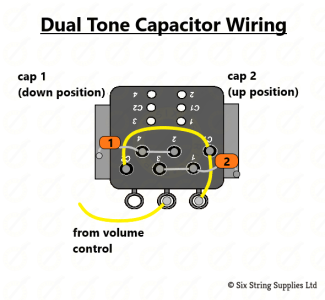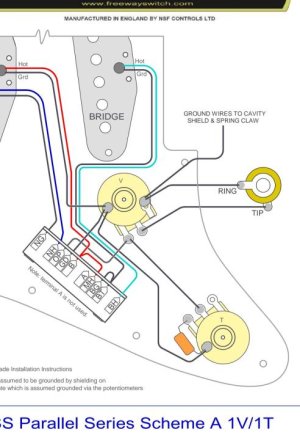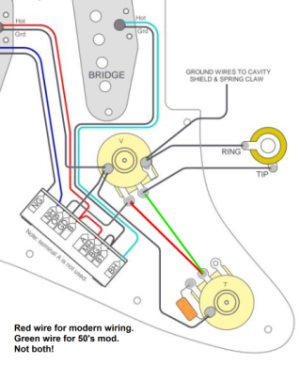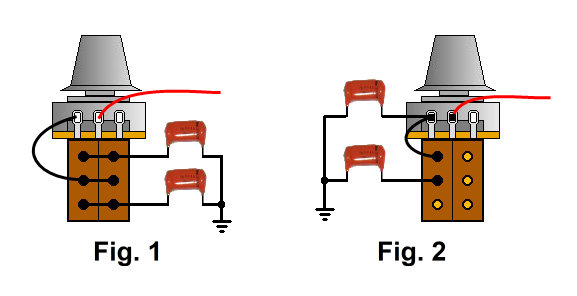AllHailDIO
New member
Hello
I found this cool mod on Six String Supplies. It is a dual capacitor mod which allows you to switch between two different capacitors via push-pull Tone knob. But the diagram is for modern wiring.
Is it possible to change this mod to 50s wiring? The common connections (c1 and c2) to lug 3 is what's throwing me off. Can I solder that to lug 1 instead or will that reverse my taper? Can I solder to lug 3 as well as my connection to the Volume pot, or will that pose a problem? I'm not sure the purpose of these common connections to a lug.
My guitar is a 1 vol, 1 tone Strat and I would like to use a Freeway 10-way switch if that's any constellation.
Thanks!
I found this cool mod on Six String Supplies. It is a dual capacitor mod which allows you to switch between two different capacitors via push-pull Tone knob. But the diagram is for modern wiring.
Is it possible to change this mod to 50s wiring? The common connections (c1 and c2) to lug 3 is what's throwing me off. Can I solder that to lug 1 instead or will that reverse my taper? Can I solder to lug 3 as well as my connection to the Volume pot, or will that pose a problem? I'm not sure the purpose of these common connections to a lug.
My guitar is a 1 vol, 1 tone Strat and I would like to use a Freeway 10-way switch if that's any constellation.
Thanks!




